Writer Toolbox: Reading like a Writer, Part 2/2
Interviewing five chapters to find out what they've been up to.
There’s gold in those hills, she remarked, where “gold” meant “storytelling advice” and “hills” meant “your bookshelves.”
We’re back for Part 2 of reading like a writer, a distillation of the year-long process I put myself through as I moved from YA to adult. Last week, I posted some starter questions to ask of existing books, and this week, I’ll be answering those questions for five novels
A Diversion
I didn’t want professional reviews to say my adult debut, THE LISTENERS, sounded like the work of a YA writer.
Not because I had a problem with that—I lived in the young adult category for a decade, after all—but because the entire point of spending a year studying different sorts of adult novels was to slide invisibly into my intended new category. Reviews saying “sounds like YA” would mean that the (extremely time-consuming) game I’d developed hadn’t actually worked to teach me the rules.
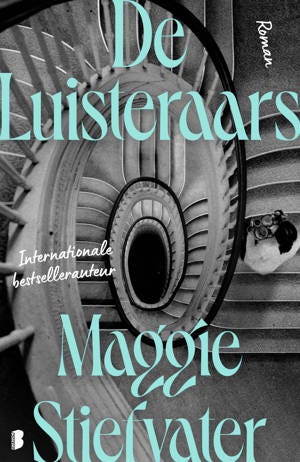
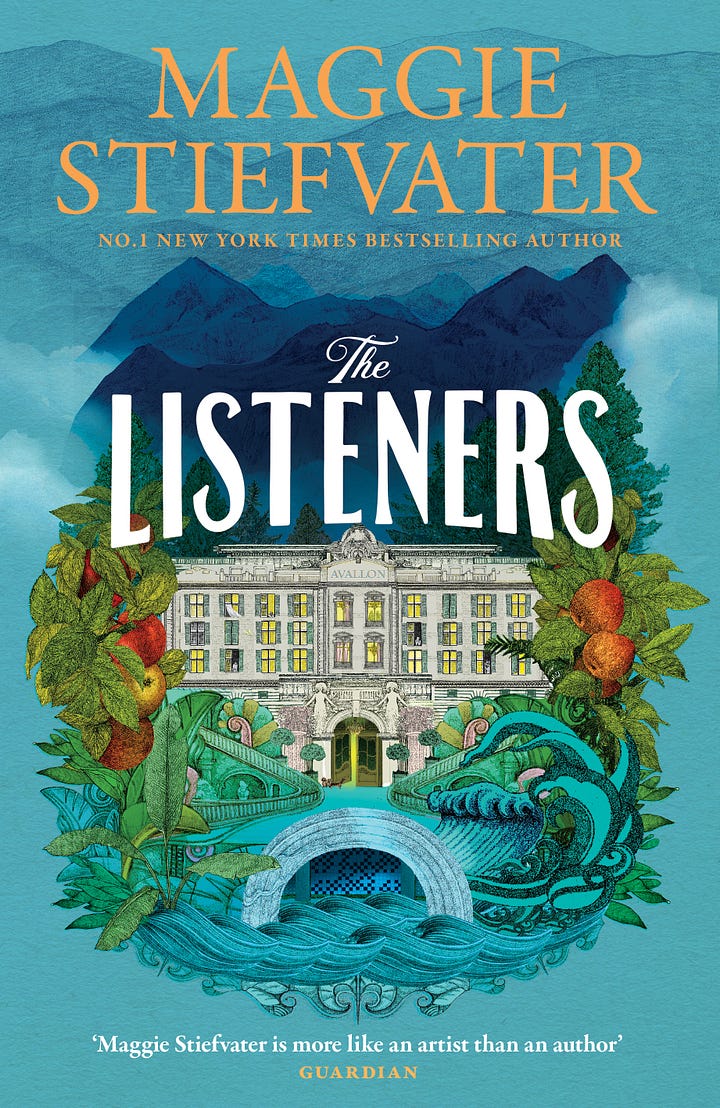
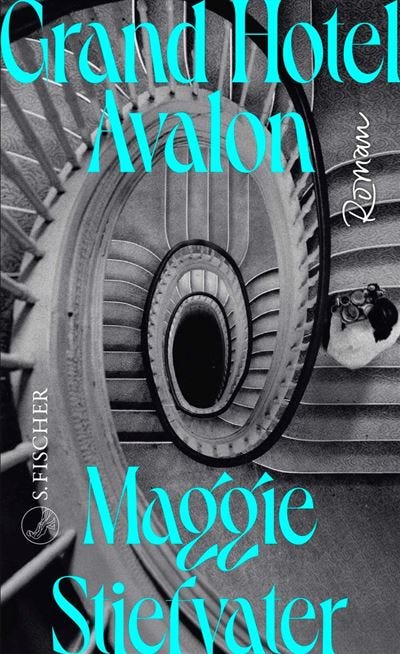
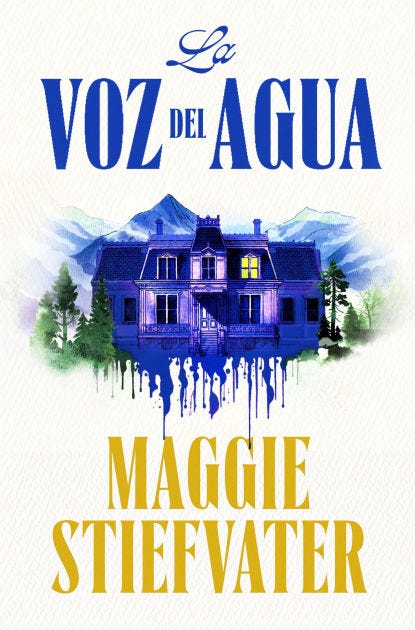
So what did the reviews say? The game works. If we know how, we can get quite an education from our own shelves.
Welcome our contestants to the stage
Today, I’ll be looking at Michael Crichton’s JURASSIC PARK (adult thriller/genre), Helen Fielding’s BRIDGET JONES’S DIARY (general adult fiction), John Steinbeck’s EAST OF EDEN (classic/ literary adult), E.B. White’s CHARLOTTE’S WEB (middle grade/ chapter book), and THE RAVEN BOYS (young adult)(er, by me).
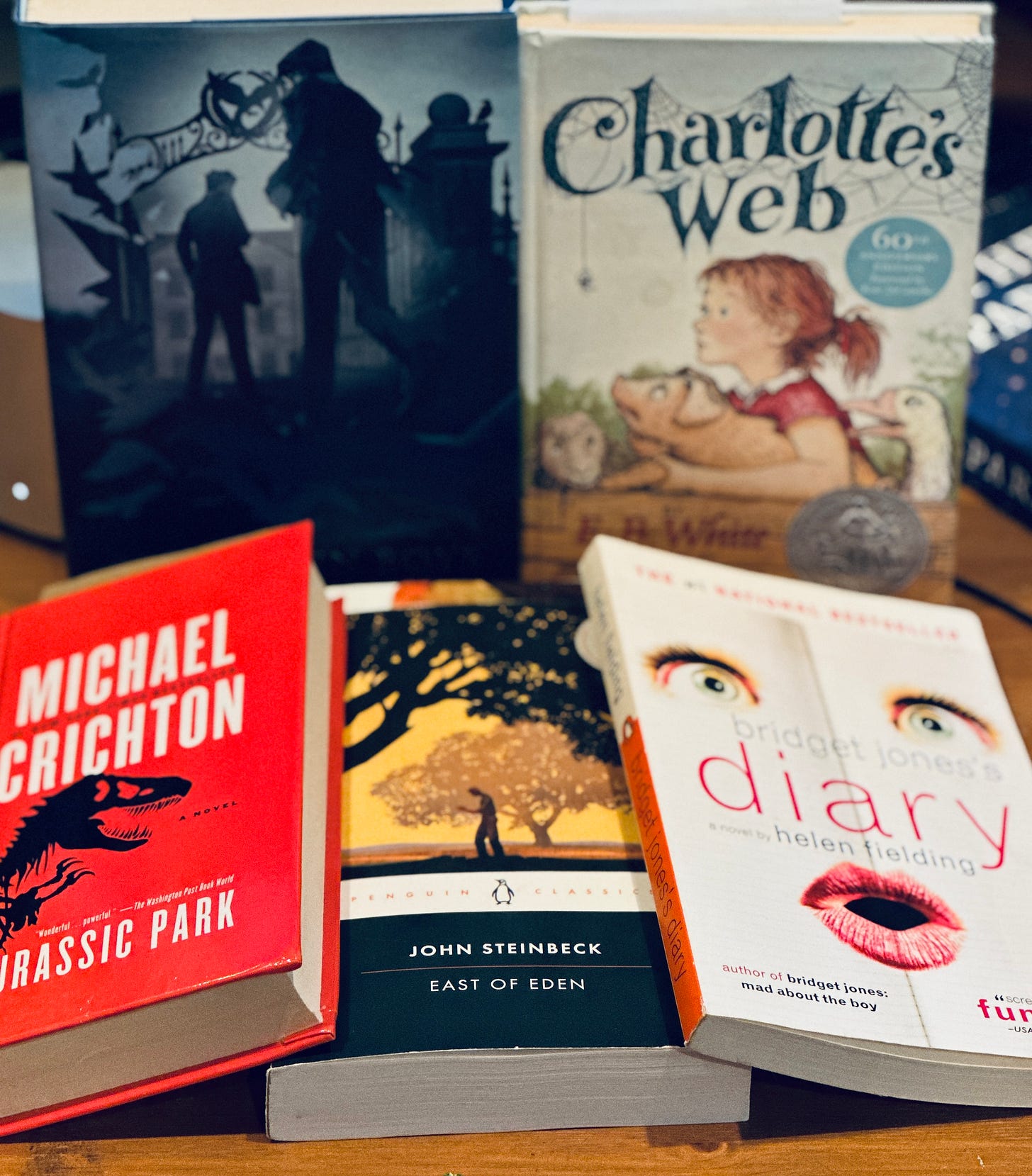
I’ll be looking at each novel’s first chapter, omitting any prologue-ish material. I’m going through every question in last post’s list. You can follow along by grabbing these books from your local library, sitting in your local bookstore, or going to the dreaded Amazon on your desktop, where there are samples of each book’s opening pages (why is this not true of every online book retailer? I don’t want to buy a novel without looking at the prose!)
Get a cup of tea. This one’s gonna be a doozy.
Chapter Structure Questions
How is the chapter framed at the beginning and end?
I want to know what “justifies” a chapter in the novel. What rules does the author use to subdivide the story? I’m also interested in seeing if the first chapter successfully promises what it will be focused on in just the opening and closing alone. And finally, I’m looking to see if the opening and closing predict the genre.
JURASSIC: After a prologue featuring a mysterious animal bite, the first real chapter digs into scene told with great immediacy (“Mike Bowman whistled cheerfully as he drove…”), that ends with a cliffhanger (“She was screaming).”
Because we only cover the minute-to-minute tension of a second animal attack, the chapter promises us a zoomed-in storytelling style; Crichton will be setting the camera down for us to watch the action. And because we already saw an animal attack in the prologue, we assume this second one has set off a chain of events that will be our novel.
BRIDGET: After a prologue (just a list of resolutions), the first chapter starts another list: her weight, what she’s consumed (alcohol, food, cigarettes), and number of calories, before going into a diary entry. The chapter ends with a diary entry, too, almost a month later, cataloguing how she has imperfectly applied various self-help advice to reject the advances of a man who is not interested in a serious relationship.
The beginning and ending of this chapter leads us to believe the novel will be told entirely in diary entries—the opening wasn’t a one-off. But because we started out focused on her relationships and ended the same way, we assume we’ll be focused on Bridget’s battle for self-improvement and meaningful love; an intimate story rather than one full of huge plot machinations.
EDEN: After a lil enigmatic letter that serves as a tonal prologue, the first chapter begins with a quite zoomed out location description (“The Salinas Vally is in Northern California.”) with only a little first person intrusion from an unnamed narrator (“I remember my childhood names for grasses”). It ends with another zoomed out sentence about the location: “And this is about the way the Salinas Valley was when my grandfather brought his wife and settled in the foothills to the east of King City.”
EAST OF EDEN is an epic—the reader can tell because we begin zoomed far out, looking at a place rather than at a person or even at events. And the chapter ends the same way, still zoomed out, with a promise that we’ll be heading back literal generations in time for our proper story.
CHARLOTTE: The quite famous opening starts with dialog: “Where’s Papa going with that ax?” By the end of the chapter, Fern, our protagonist, is obsessed with her new pet pig—when asked for the capital of Pennsylvania in school, she dreamily replies “Wilbur,” to the amusement of her classmates.
This intimate framing—a doomed pig becoming a girl’s pet—tells us that we won’t be galloping forward and backward across the generations, unlike EDEN. We’ll be interested in one thing only: the fate of this friendship.
RAVEN: After a prologue that sets up an overarching curse, the first chapter puts a camera down in a location we can “see” (“It was freezing in the churchyard, even before the dead arrived.”) It ends with dialog, still in immediate storytelling style (“Either you’re his true love,” Neeve said, “or you killed him.”).
Because the “zoom” level doesn’t change, the reader assume the next chapter will continue in this immersive style,

